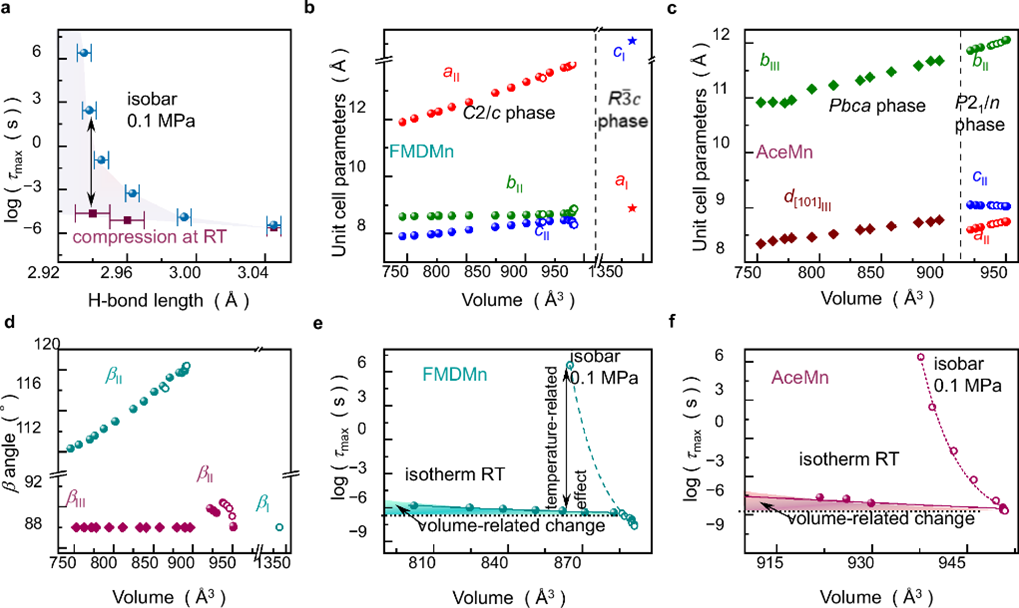Temperature and volumetric effects on structural and dielectric properties of hybrid perovskites
Title: Temperature and volumetric effects on structural and dielectric properties of hybrid perovskites
Authors: A. Nowok, S. Sobczak, K. Roszak, A. Z. Szeremeta, M. Mączka, A. Katrusiak, S. Pawlus, F. Formalik, A. J. B. dos Santos, W. Paraguassu, A. Sieradzki
Journal: Nature Communciations
DOI: 10.1038/s41467-024-51396-5

The most current outcomes of Prof. Mączka’s collaboration are presented in this publication. A large team has been working to understand different effect of temperature and pressure on molecular dynamics in 3D perovskites. 3D perovskites with monoatomic (halides) or multiatomic ligands (formates, cyanates, dicyanamides etc.) are rapidly evolving materials with diverse applications. The research focused on two representative members of this family of compounds, namely formamidinium (FMDMnF) and acetamidinium (ACEMnF) manganese formates.
It has been demonstrated using single-crystal high-pressure X-ray diffraction and Raman spectroscopy that both compounds undergo several pressure-induced phase transitions. Interestingly, AceMn is a very rare example of a compound exhibiting atypical pressure-induced transition associated with symmetry increase. The most important achievement of this work is, however, explanation of counterintuitive behaviour of the dielectric relaxation under temperature and pressure. The relaxation is related to dynamics of the organic cations and the study demonstrated that whereas temperature strongly affects the relaxation times, the effect of pressure on the relaxation is very weak. This finding is rather unexpected, considering the mechanism underpinning the relaxation phenomenon in these materials and the fact that pressure has much more pronounced effect on structural properties (for instance volume of the cavity occupied by the organic cation and strength of the hydrogen bonds) than temperature due to softness of their crystal structures. Experimental and theoretical data led to conclusion that the relaxation dynamics of 3D perovskites show two significant contributions, thermal and volumetric, but the former one dominates. As a result, at high temperatures, the perovskite framework possesses enough thermal energy to adjust and accommodate the reorientations of cage cations even under high pressure. Their structural flexibility decreases significantly with lowering temperature, resulting in a dramatic slowdown of the relaxation dynamics of the cage cation.
Highlights:
- Mechanisms of pressure-induced phase transitions in two 3D perovskites have been explained
- Unusual behaviour under compression (atypical increase of symmetry, negative linear compressibility and very large overcompression above 5 GPa) has been discovered for ACEMnF
- Very strong (weak) dependence of the dielectric relaxation time of 3D perovskites on temperature (compression) has been explained
See also
- The Institute
- General information
- Employees
- News
- Scientific News
- Gender equality plan
- Address and contact data
- Research
- Research profile
- List of publications
- List of projects
- International cooperation
- Information in BIP
- Scientific Council
- Organizational structure
- GDPR


